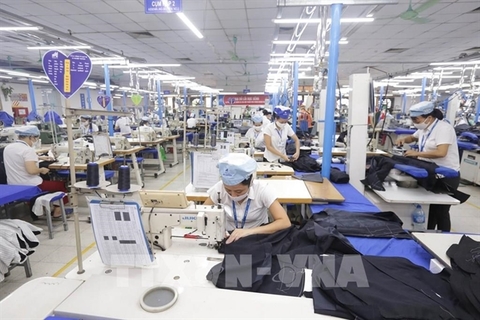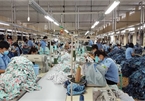 |
|
Many textile and garment factories |
Supply chains in HCM City and the southern provinces are at great risk of snapping because many businesses have been forced to stop operating or sharply reduce production to comply with the COVID-19 prevention regime.
According to the Ministry of Planning and Investment, in July the city’s index of industrial production (IIP) dropped by nearly 20 per cent, Long An Province’s by 14.5 per cent and Ca Mau Province’s by 13.7 per cent.
Dong Thap, Tra Vinh and Ba Ria-Vung Tau all saw declines of 2-6 per cent.
The remaining provinces have managed to maintain positive growth, but with Covid-19 still very much a threat that is expected to change in the coming months.
Chu Tien Dung, chairman of the HCM City Union of Business Association, said in the city alone an average of 1,800 businesses have exited the market every month this year, 18.99 per cent higher than in the same period last year.
According to experts, the high rate is very worrisome.
The Viet Nam Association of Seafood Exporters and Producers said soon as stricter social distancing requirements were adopted by 19 southern provinces and cities, exports fell by 15 per cent in the second half of July. Exports for the full month fell 4 per cent year-on-year to US$763 million, and the downward trend would continue, it said.
The chairman of the HCM City Association of Garment, Textile, Embroidery and Knitting, Pham Xuan Hong, said the city currently requires employees to live in their workplace to ensure businesses continue to function, but it is only suitable for the short term since no business could bear the costs otherwise.
With textile and garment being a labour-intensive industry that requires a few thousands to tens of thousands of workers, it is impossible to bear the cost of accommodation for such numbers, he added.
The rate of textile and garment plants closing due to the pandemic has reached 30-35 per cent, according to the Viet Nam Textile and Apparel Association (Vitas).
Hong pointed out the vaccination rate for textile and garment workers remained very low, especially in key production hubs in the south-western and south-eastern regions.
Due to the inability to ensure the production situation as planned, the disruption of the supply chain had also put huge pressure on many textile and garment enterprises.
It is an industry in which any failure to deliver in time would cause customers to cancel orders, impacting it over the medium term.
According to experts, accelerating vaccination to reach herd immunity is the best way to restore production.
Vitas is one of the four associations that petitioned the Government to speed up vaccinations and help businesses buy vaccines for their workers.
Source: VNS

Apparel sector faces supply chain disruption
Stagnant business and production activities as a result of the impact of Covid-19, increased pressure over delivery to partners, and high transport costs are threatening the supply chains of the apparel sector.